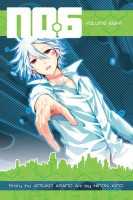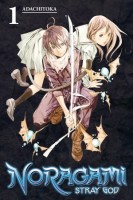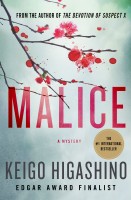Well, it was bound to happen eventually. After several months of what I would consider to be fairly reasonable amounts of manga and such making it onto my shelves, August comes along and proves that things can still occasionally go a little overboard. Granted, I actually have a few good excuses this time: a larger than usual box of review copies arrived, a friend who is preparing to move out of the state bequeathed a fair number of books to me so she wouldn’t have to pack them, and a bunch of my Kickstarter rewards arrived. So, even though the number of August’s acquisitions is a bit absurd, at least my wallet didn’t take as big of a hit as it might initially seem.
As for what I was particularly happy to see arrive in August, first and foremost was Wandering Son, Volume 7 by Takako Shimura. (Review to come soon!) Sadly, there doesn’t seem to be a release date yet for the eighth volume, so I have no idea when we’ll see another installment. I was also very excited for the release of Jen Lee Quick’s Off*Beat, Volume 3, which is the final volume in the series. (My review of that one has already been posted.) Black Rose Alice, Volume 1 by Setona Mizushiro is another manga from August that I particularly enjoyed, as was the most recent volume in Kohske’s Gangsta. I haven’t read it yet, but there’s a new volume of Crimson Spell by Ayano Yamane, too! And of course I must mention that the Cardcaptor Sakura anime is now once again available, which pleases me greatly.
Manga!
Attack on Titan, Volume 13 by Hajime Isayama
Attack on Titan: Before the Fall, Volume 2 written by Ryo Suzukaze, illustrated by Satoshi Shiki
Battle Angel Alita: Last Order, Volume 19 by Yukito Kishiro
Black Rose Alice, Volume 1 by Setona Mizushiro
Chirality: To the Promised Land, Volume 1 by Satoshi Urushihara
Chi’s Sweet Home, Volume 11 by Konami Kanata
Crimson Spell, Volume 5 by Ayano Yamane
Devils and Realist, Volume 2 written by Madoka Takadono, illustrated by Utako Yukihiro
Dog X Cat, Volume 4 by Yoshimi Amasaki
Dorohedoro, Volume 13 by Q Hayashida
Dorothea, Volume 1 by Cuvie
Food Wars!: Shokugeki no Soma, Volume 1 written by Yuto Tsukuda, illustrated by Shun Saeki
From the New World, Volume 5 written by Yusuke Kishi and illustrated by Toru Oikawa
Fairy Tail, Volumes 40-41 by Hiro Mashima
Gangsta, Volume 3 by Kohske
Gunslinger Girl, Volumes 1-6 by Yu Aida
The Heroic Legend of Arslan, Volume 1 by Hiromu Arakawa
Kinoko Inu: Mushroom Pup, Volume 1 by Kimama Aoboshi
Knights of Sidonia, Volume 10 by Tsutomu Nihei
Kokoro Connect, Volume 1 written by Anda Sadanatsu, illustrated by CUTEG
Library Wars: Love & War, Volume 12 by Kiiro Yumi
Loveless, Volume 12 by Yun Kouga
Lust, Volume 1 by Tenjiku Ronin
Monster Musume, Volume 4 by Okayado
Monster Soul, Volume 2 by Hiro Mashima
MPD-Psycho, Volume 11 written by Eiji Otsuka, illustrated by Shou Tajima
My Little Monster, Volume 3 by Robico
Nabari no Ou, Volume 1 by Yuhki Kamatani
No. 6, Volume 8 by Hinoki Kino
Noragami: Stray God, Volume 1 by Adachitoka
Nyotai-ka!, Volume 1 by Ru-en Rouga
Off*Beat, Volume 3 by Jen Lee Quick
The Prince of Tennis, Volumes 1-7 by Takeshi Konomi
Project X Challengers: Cup Noodle by Tadashi Katoh
Raqiya: The New Book of Revelation, Volumes 1-2 written by Masao Yajima, illustrated by Boichi
Say I Love You, Volume 3 by Kanae Hazuki
The Seven Deadly Sins, Volume 3 by Nakaba Suzuki
A Strange Kind Of Woman, Volume 2 by Inu
Time Killers by Kazue Kato
UQ Holder!, Volumes 1-2 by Ken Akamatsu
Wandering Son, Volume 7 by Takako Shimura
Wolfsmund, Volume 5 by Mitsuhisa Kuji
Yubisaki Milk Tea, Volumes 1-8 by Tomochika Miyano
Manhwa!
Martin & John, Volume 1 by Hee-Jung Park
U Don’t Know Me by Rakun
Comics!
Bad Company, Part 1 by Guilt | Pleasure
Devil’s Cake, Volume 1-2 by Angi Mauri
Golden Rules by Seth T. Hahne
Hell, Nebraska written by Shaun Manning, illustrated by Anna Wieszczyk
If This Be Sin by Hazel Newlevant
Nonbinary by Melanie Gillman
A Rainy Day Love Song by Seth T. Hahne
The Shadow Hero written by Gene Luen Yang, illustrated by Sonny Liew
Take 2!: Mahou Shounen Breakfast Club Zine by Katie O’Neill and Toril Orlesky
Through the Woods by Emily Carroll
Water Baby by Ross Campbell
The Wonderful Wizard of Oz written by Eric Shanower, illustrated by Skottie Young
Artbooks!
Dragon Girl and Monkey King by Katsuya Terada
Novels!
Good Luck, Yukikaze by Chōhei Kambayashi
Quantum Devil Saga: Avatar Tuner, Volume 1 by Yu Godai
Nonfiction!
The Pillow Book of Sei Shōnagon by Sei Shōnagon
Samurai Confidential by Ryuto Kanzaki
Anime!
Cardcaptor Sakura directed by Morio Asaka
Wonder by Mirai Mizue






